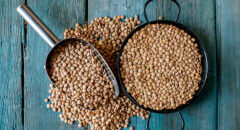
If you have Type 2 diabetes, you may have already adjusted your diet to reduce the amount of sugar that you consume. Did you know that adding the right herbs and spices can be a part of your nutritional plan too?
Of course, these changes won’t take the place of an overall healthy lifestyle and keeping on top of your medication. However, it’s certainly a flavorful way to help with maintaining your blood sugar levels.
Why Do The Spicy Foods Work?
While there is still more research to be done, two things have become clear based on what health experts know so far. Herbs and spices can influence blood sugar levels by reducing inflammation in the body as well as modifying the body’s sensitivity to insulin.
On the anti-inflammatory side, curcumin in turmeric and the active ingredients in garlic have been found to be powerful agents.
By reducing inflammation, these spices can offset an important chain of events. It’s purported that less inflammation protects vital beta cells in the pancreas from oxidative damage, which in turn maintains healthy levels of insulin in the body. This insulin will then keep your blood sugar levels within the ideal range.
On the other hand, the capsaicin that is found in chili peppers may have a more direct impact on insulin production. Based on studies that were conducted, capsaicin may affect the tissues’ sensitivity to insulin which means they require less of the hormone when converting glucose in the body for use in the cells. If that’s true, you would effectively require less insulin to maintain your ideal blood sugar levels.
The Herbs and Spices You Should Eat
Of course, when you hear the term ‘spicy foods’, you may automatically think about hot peppers. While those are definitely on the list, other herbs and spices can be beneficial to a Type 2 diabetic as well. Here are the helpful foods to add to your diet.
- Turmeric – This versatile spice can be used to make juices or can be added to your meals as it has a distinctive flavor profile. It’s also a key ingredient in certain curry powders so look out for that as well.








